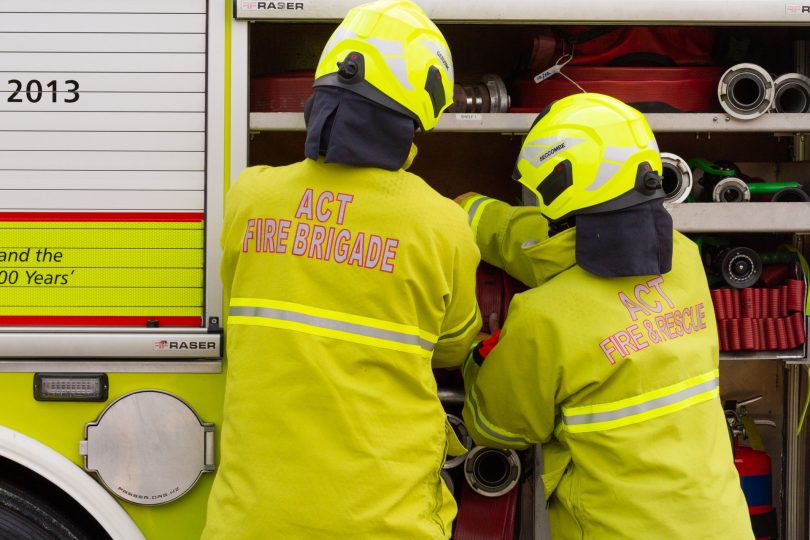
More cancers have been added to workers compensation legislation for firefighters. Photo: Region.
The risk of female reproductive cancers in firefighters has been recognised for the first time as part of an amendment to workers compensation regulations.
Eight more cancers have been added to a prescribed list under the Safety, Rehabilitation and Compensation Regulations 2019 – primary site lung, skin, cervical, ovarian, penile, pancreatic and thyroid cancer, and malignant mesothelioma.
It brings the total number of prescribed cancers to 20.
United Firefighters Union ACT branch secretary Greg McConville said the addition of solely female cancers was “highly significant”.
“The key research supporting these additions has found that in the first three years of a firefighter’s career, the risk of cancer increases 1.5 fold,” he said.
“This is based on studies of microRNA expression compared to new recruits. Other more recent studies have shown changes in DNA, suggesting potential cellular mechanisms associated with increased cancer risk.”
A review by the Attorney-General’s department in 2019 recommended mesothelioma be added to the list, while skin cancer and lung cancer were recommended by a Senate Inquiry back in 2011.
While there are fewer women in firefighting, so fewer people to study specifically for female reproductive cancers, Mr McConville said the research already out there was enough to show they could be at risk.
“It is based on these studies that we can be confident that there is an increased risk of female reproductive cancers,” he said.
“Male reproductive cancer is already covered.”
Workplace Relations Minister Tony Burke said those who risked their lives and wellbeing to save others deserved improved access to compensation.
“Every time a firefighter responds to a call, they know the risk, but they go out there anyway,” he said.
“Their sacrifices should be paid back with fair compensation – not with years of battling with the system to get the health care they deserve.
“These changes mean that firefighters in the Commonwealth jurisdiction who contract these cancers can focus on their treatment and recovery.”
Mr Burke said the expanded list came on the back of changes and updates to the firefighter provisions of the Safety, Rehabilitation and Compensation Act 1988, as well as recent improvements to workers’ compensation arrangements for ACT firefighters under the Secure Jobs, Better Pay package.
The changes have also been welcomed by both the ACT Emergency Services Agency (ESA) and ACT Fire and Rescue.
“This addition provides recognition of the inherent dangers firefighters face from long-term exposure to contaminants and provides peace of mind for firefighters in knowing they will be supported if affected by the covered cancers,” an ESA spokesperson said.
“The ACT Government, in collaboration with the United Firefighters Union, prioritises the health and wellbeing of its firefighters, and though it aims to mitigate injury or illness in firefighters through refined processes and use of the latest equipment, the risks cannot always be eliminated.
“Therefore, it is reassuring to know, should our firefighters be impacted, that they and their families will be supported.”
But Mr McConville said more still needed to be done, including around the types of treatment available for firefighters who used or were trained at facilities where they were exposed to foams containing PFAS.
While foams containing PFAS have largely been phased out, their impacts remained.
“There needs to be health screening of affected firefighters, and remediation works of many polluted sites needs to occur,” Mr McConville said.
“A study by Macquarie University has shown that blood and plasma donations (therapeutic venesection) can reduce PFAS in firefighters’ blood. This procedure needs to be supported by the Commonwealth Government.”
Firefighters can be exposed to a number of potential carcinogens while out on the job.
According to Mr Burke, burning bushland and buildings, particularly older buildings, expose firefighters to smoke from diesel, plastics and other chemicals, while collapsing buildings carry the risk of exposure to clouds of asbestos dust.












